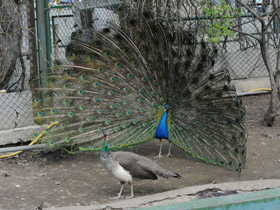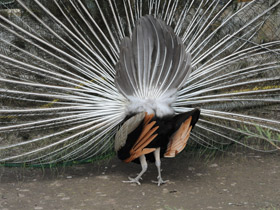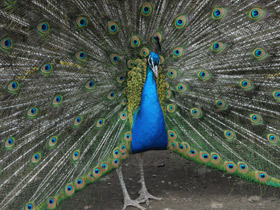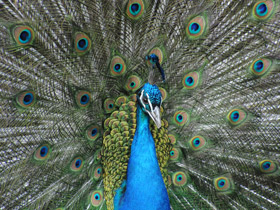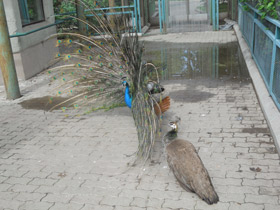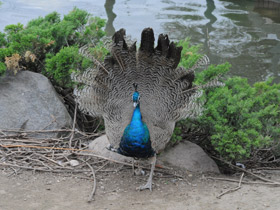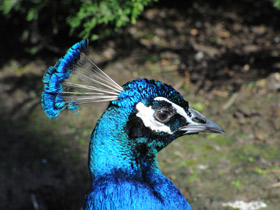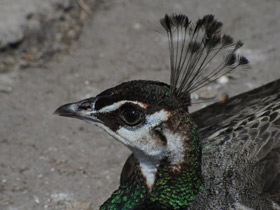The Indian peafowl Pavo cristatus
Indian peafowl видео
Источник: ZoogalaktikaThe Indian peafowl is one of the largest members of Galliformes order. The Indian peafowl has been kept in semi-domestication for over 2,000 years and has been taken to many parts of the world as an ornamental bird kept in the country estates and bird parks. Wild Indian peafowl inhabit tropical high forests in India and Sri Lanka. This bird is best known for its famous iridescent feathers of the train, decorated with bright ocelli. The peacock train, which is erroneously called “a tail”, is presented by the long upper tail coverts, while the true tail has much shorter feathers and is used as a rudder, helping the bird steer and manoeuvre in flight. While demonstrating the courtship behaviour, the peacock raises his tail feathers and spreads them in a fan shape, vibrating the tail feathers against the train feathers. It is not always easy for the peacock to maintain this position, especially in a windy weather. During display, the tail serves as a support for the spread train. However, the train is not a single decorative feature of the peacock; he also has a wonderful crown on the head. Like many other members of the Pheasant family, peafowl have the ability to fly but prefer walking on land. Despite their large sizes and, in the males, the lengthy train, the Indian peafowl are remarkably agile and can move skilfully in the dense grass and shrub thickets. Using their long, strong legs, they can quickly escape from predators by foot.
During breeding season, peafowl live in small groups of one male and several females. Outside of the breeding season, peafowl may form larger flocks consisting of either males or females with juveniles. The members of the group forage in the open areas in the morning and in the afternoon, though in the night, they gather in larger groups on the tall roosting trees surrounding their feeding territories. Peafowl’s daily flights to the roosting trees are very impressive, especially when the males still have their ornamental plumage. After the end of the breeding season, peafowl moult and lose their beautiful plumage including fancy train feathers. They grow new feathers by the next breeding season.
Indian peafowl nest on the ground. The female digs up a scrape in the ground or finds an old nest scrape and lines it with dry grass and leaves. The eggs are incubated by the female for about one month. After hatching, the female and her brood stay in the dense forest areas for some time while the female teaches her chicks to feed. As the chicks become older, the mother takes them to the better feeding territories, such as forest clearings or cultivated areas and plantations, and the broods sometimes significantly damage crops. They mainly feed on seeds of cultivated and wild plants, nuts, and berries; they may also eat insects, molluscs, and small reptiles. Indian peafowl start breeding at the age of three years.

















